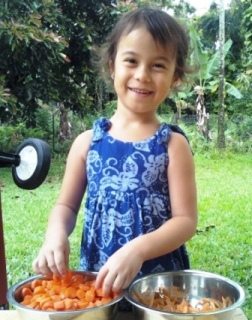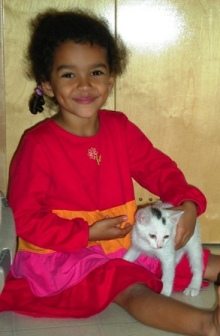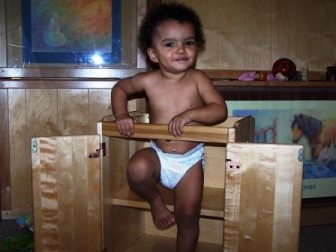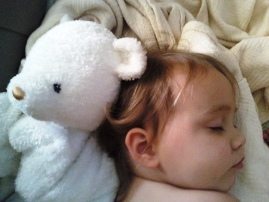Pamela writes: Whenever I think about my four granddaughters, all born between Michaelmas and Easter, I smile with deep joy and pleasure. Who would have thought that I would have the priceless opportunity to relive the wonders of birth and babyhood, to share in those seemingly moment-to-moment miraculous transformations as each of them has developed into healthy young girls – now 8, 6, 6, and 6. I have also rediscovered my own childhood from a new perspective as a grandmother, reminding me of my very first Anthroposopohical read back in 1972: A.C. Harwood’s The Recovery of Man in Childhood. Although it is a close call, in some ways, love is really lovelier the second (generation) time around…if nothing else, there is a bit more breather space for observation and a few less sleepless nights!
I have again transformed my house into a magical world of colored silks, puppets, the warmth of wooden toys, and handmade dolls. Beyond that, I have evolved from a Waldorf teacher turned Waldorf-inspired home provider, to a daily nurturer in a life-filled, life-full home-oriented environment. I have created a setting where children – primarily now my own grandchildren – can cozy into the security of predictable daily rhythms and routines, into a relaxed consistency and joyful experience of delight in the ordinary, homey tasks that present themselves. Our days flow between practical and artistic activities, with a natural flexibility that allows for unexpected rainbows and the arrival (and consequent adoption) of an expectant stray cat.
Our mornings proceed from a warm and nourishing breakfast  (prepared and served and tidied up, with small hands helping as their skills dictate) to feeding cats and taking compost out to the garden for the feral chickens. These latter march out of the ferns and tangle of vines with unfailing regularity, headed up by a regal and lavishing plumed Bantam rooster. Depending on the skill and cunning of the mongoose, there may be a string of fluttering chipmunk–or-penguin-feathered chicks and clicking mother in the lot.
(prepared and served and tidied up, with small hands helping as their skills dictate) to feeding cats and taking compost out to the garden for the feral chickens. These latter march out of the ferns and tangle of vines with unfailing regularity, headed up by a regal and lavishing plumed Bantam rooster. Depending on the skill and cunning of the mongoose, there may be a string of fluttering chipmunk–or-penguin-feathered chicks and clicking mother in the lot.
Some days we harvest white pineapples or peel, slice and dry apples and bananas. Tangerine season, November to January, signals lots of juicing and popsicle making. The small garden yields kale and green beans to my more practical eye, while the girls also find tiny weedy wildflowers amongst the vegetables to craft into bouquets for the dollhouse or to decorate the fairy houses nestled on mossy beds beneath the ti or hibiscus.
While I do the laundry, one or another of the girls might assist me, while the other tends to the doll house needs: beds to tidy, tiny china dogs to be petted, the beeswax food set out onto the little pine table. Each girl has her own horse print sleeping bag to roll up and put onto my big bed … and then what fun, to jump into the whole lot and enjoy delicious moments of wild disarray.
 We paint, busy ourselves with crayons, sewing or crafts, as well as dance with scarves and bells in a combined measure of planning and spontaneity. Books are everywhere, and after years of listening to my oral stories and songs (sometimes accompanied by softly needled felted puppets), the girls are discovering the pleasure of words through reading, retelling and reimagining story themselves.
We paint, busy ourselves with crayons, sewing or crafts, as well as dance with scarves and bells in a combined measure of planning and spontaneity. Books are everywhere, and after years of listening to my oral stories and songs (sometimes accompanied by softly needled felted puppets), the girls are discovering the pleasure of words through reading, retelling and reimagining story themselves.
As I sit here and type and watch them play outside in and around the avocado trees’ sheltering arms, I reflect on the multiple issues facing families today, here as well as on the Mainland. I am acutely aware of these challenges through my participation with the Governor’s Early Learning Advisory Board and the DHS Advisory Board (both as the state advocate for home providers), and my role as Hawai’i AEYC Chapter President. But it is especially through my role as grandmother and home provider that I have experienced directly how much children reflect the stresses of our technocratic society. The high cost of living here in Hawai’i, combined with the high percentage of low-paid, tourist-oriented employment, often forces both parents to enter the workforce with more than one job. The stresses on single parent homes are even greater.
There is an increasing trend towards play-starved, computer-oriented early childhood curriculum, both in programs for the very young and in the K-3 public and private settings. Local preschools tend to be both overcrowded and under-staffed (one teacher I know is in a crowded setting with 52 two-year-olds, and a ratio of 8:1). The current statistics indicate that 40% of our keiki – children- are not in, nor have the opportunity for, preschool programs.
The value of and urgent need for high-quality licensed home  programs, as well as secure, loving extended family (o’hana) situations, has never been greater. Here in these environments, children can be gently held by the nurturing rhythms of daily life, with everyday activities providing the core curriculum. Whether for babies and toddlers, or the older child, an environment that is free from media, overly intellectual and abstract ‘teaching’, where children have plenty of access to self-directed, open-ended play, indoors and outside in natural settings, fosters resiliency and brings balance into the lamentable and often unavoidable, harried and hectic modern lifestyles.
programs, as well as secure, loving extended family (o’hana) situations, has never been greater. Here in these environments, children can be gently held by the nurturing rhythms of daily life, with everyday activities providing the core curriculum. Whether for babies and toddlers, or the older child, an environment that is free from media, overly intellectual and abstract ‘teaching’, where children have plenty of access to self-directed, open-ended play, indoors and outside in natural settings, fosters resiliency and brings balance into the lamentable and often unavoidable, harried and hectic modern lifestyles.
Although my transition from a Waldorf-oriented and trained teacher into a LifeWays modeled home provider was somewhat unplanned through the arrival of three grandchildren in quick succession, I am extremely grateful for this opportunity. Indeed, what I perceive out of my experiences and observations over the past several years, is that the nurturing and domestic arts are absolutely essential food for the soul of the young child. A stable, secure rhythm that centers around the homey domestic arts, one that nurtures the life sense through the warmth and consistency of humble tasks such as hand-washing, hair-brushing, naps and regular, simple wholesome meals shared together, provides a true antidote for families, which are assailed by the fragmentation of society in these challenging times.
My LifeWays training has helped me to consciously stop and reevaluate my ‘teaching’ priorities and sense of what is essential for today’s children; to take a deep breath amidst the chaos; and to recreate the kind of hearth-in-home where in some small measure children and their parents can relax, unfold and develop the kind of secure roots within, which hopefully will help them to withstand the storms of time and circumstance that may come.
About Pamela: LifeWays serves as her inspiration, and it is to this model and imagination that she dedicates her work with, and advocacy for, young children and families on Hawaii Island and statewide.
We thank you for stopping by to enjoy this article. If you would like to share your experiences working with children in a LifeWays home or center, please feel free to contact Mara Spiropoulos at linearmara@gmail.com. She would be thrilled to work with you to share your wisdom and experiences on the LifeWays blog.
